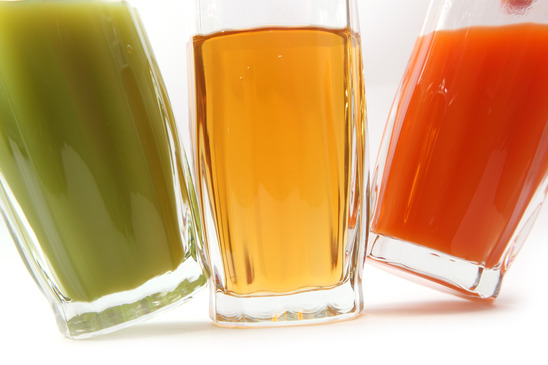Juicing- Are We Putting Our Bodies At Risk?
Juicing is a 5-billion-dollar industry and is expected to continue growing in North America each year. Juicing is known to be an easy way to receive multiple servings of fruits and vegetables all in one cup. North Americans have began juicing to loose weight, cleanse their bodies and to consume more servings of fruits and vegetables. The question remains, does juicing provide our bodies with enough nutrients in accordance with North American Food Guides or are we putting our bodies at risk?
Juicing is the process in which the water and nutrients are separated from the pulp in all produce items. The pulp, which contains all the fibre, is normally discarded leaving only the juice. Vegetable Juices are typically lower in calories offering only 50-75 calories per cup compared to fruit juices that can offer close to 200 calories per cup. When people “Juice” they no longer eat solid foods for a period of time. This can range from several days to several weeks. If someone were to drink 8 cups a day of fresh juice they would only consume 1600 calories on the high end of a pure fruit juice or 600 calories a day on 100% vegetable juice.
Risks associated with a juice diet:
When looking at the North American Food Guide, juicing is missing important key food groups including; milk and alternatives and grain products. Fibre mainly comes from fruits and vegetables yet most juicers extract the fibre. The grain food group also provides fibre however it is not a part of the juicing diet. Fibre is very important to our bodies; fibre can help keep you regular, lower blood cholesterol levels and help regulate blood glucose. Fiber also allows us to feel full longer after consumption. Men 19-50 are recommended 38g of fibre and woman are recommended 25g of fibre per day, however the juicing diet does not meet these recommendations as it was all extracted. So what happens when we do not consume enough fibre in our diets? Low fibre or lack of fibre can cause cardiovascular disease, weight gain and issues within our digestive system.
Juicing is a low caloric diet that can slow down an individual’s metabolism. Yes, the juicing diet can allow a person to drop 10 lbs quickly (water weight) but those who juice will more than likely gain all the weight back quickly or potentially add additional unwanted weight. Low calorie diets also have the potential of the following symptoms: fatigue, nausea, loss of lean muscle mass, gout and other additional health risks. Blood glucose levels may also take a dive due to the low caloric intake and lack of food consumption.
The Juice diet is not recommended to be consumed without other whole foods because the diet does not offer all the essential nutrients that are important to our bodies on a daily basis. A few suggestions from The Canada Food guide in order to maintain good nutrition include eating a variety of whole grains, choose foods lower in saturated and trans fat, eat the recommended servings from all four food groups and choose whole vegetables and fruit more often than juice. You not only will meet your needs for vitamins, minerals and other nutrients but also reduce your risk of type 2 diabetes, heart disease and cancer.
Just a few suggestions:











